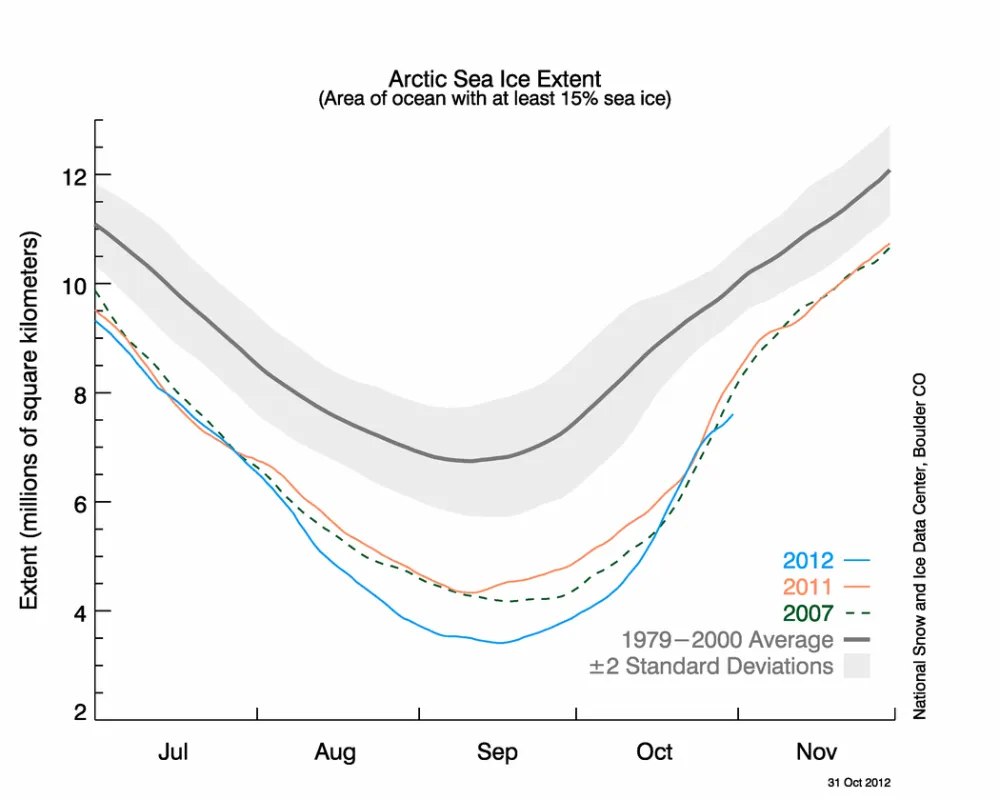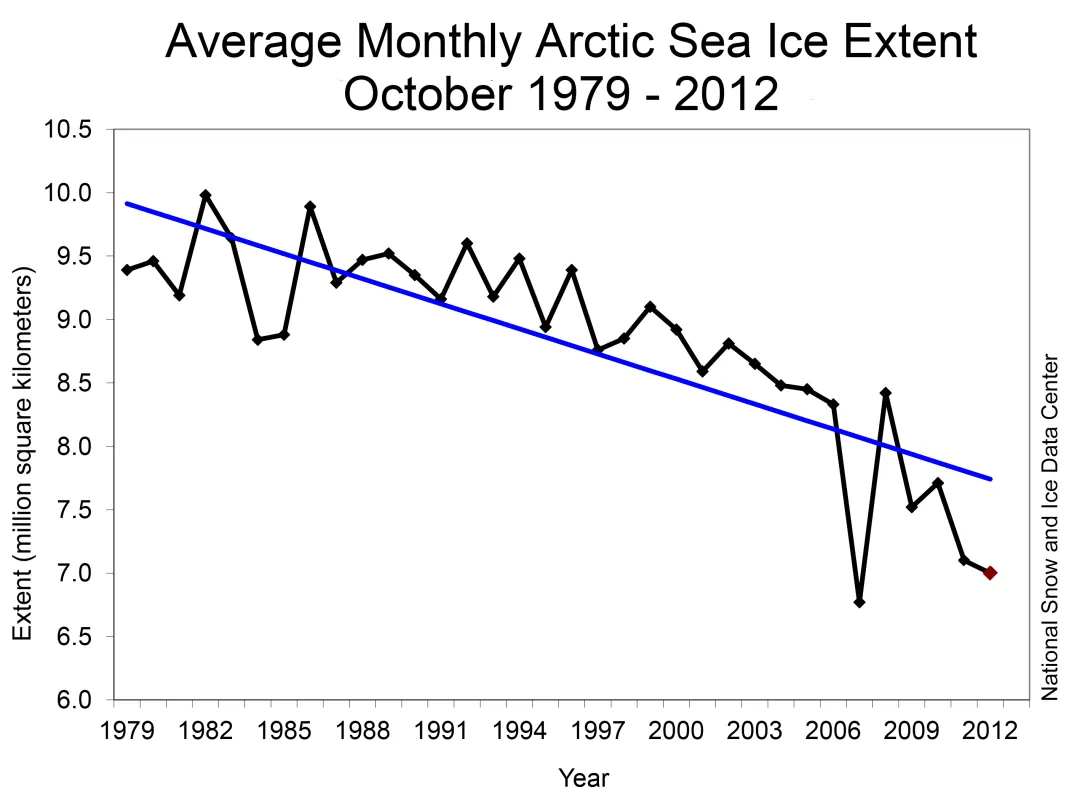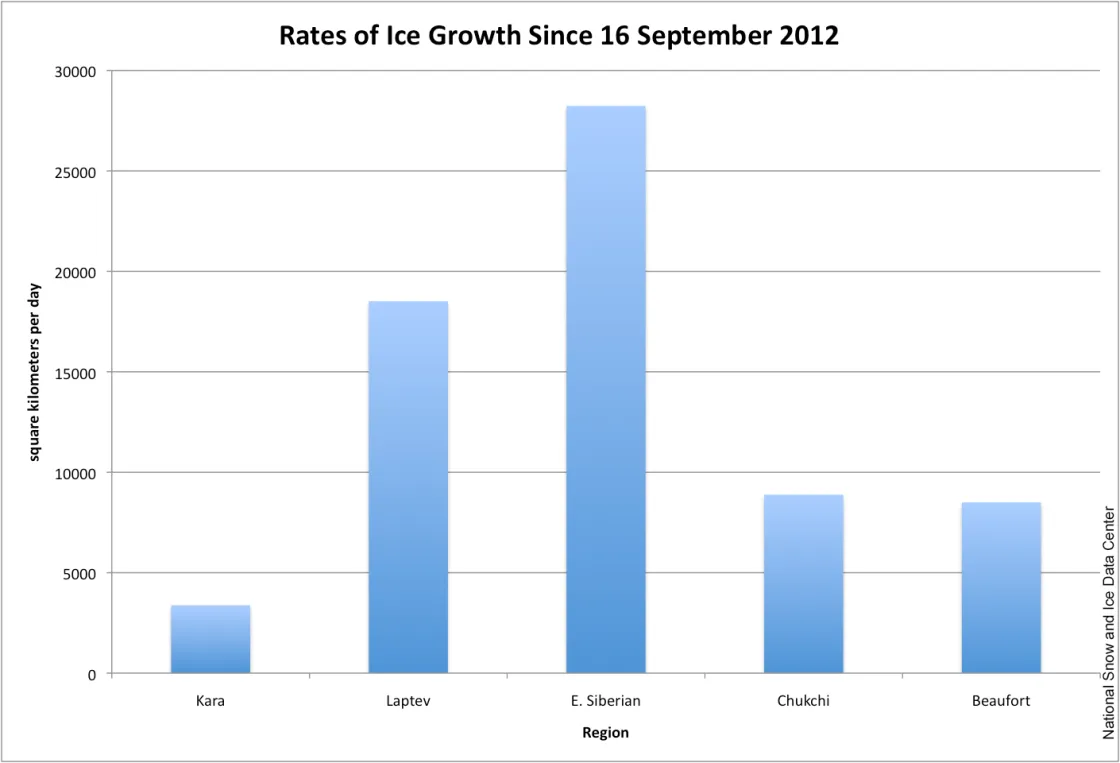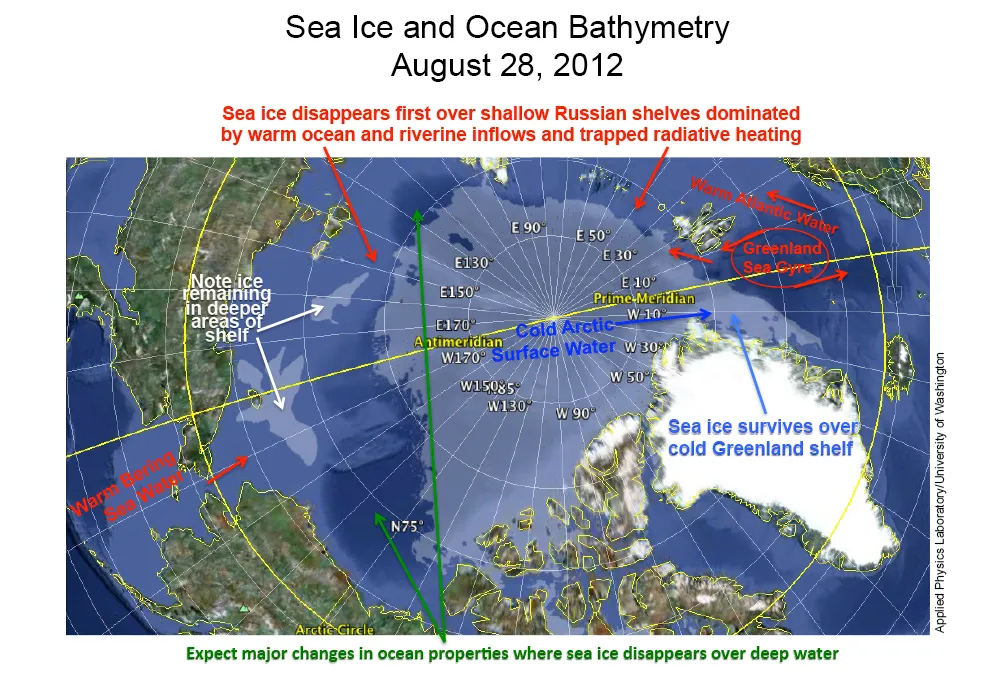Ice extent doubled in October. The rate of increase since the 2012 minimum was near record, resulting in an October monthly extent 230,000 square kilometers (88,800 square miles) greater than the previous low for the month, which occurred in 2007. Despite this rapid growth, ice extent remains far below normal as we begin November.
Overview of conditions
Average ice extent for October was 7.00 million square kilometers (2.70 million square miles). This is the second lowest in the satellite record, 230,000 square kilometers (88,800 square miles) above the 2007 record for the month. However, it is 2.29 million square kilometers (884,000 square miles) below the 1979 to 2000 average. The East Siberian, Chukchi, and Laptev seas have substantially frozen up. Large areas of the southern Beaufort, Barents and Kara seas remain ice free.
As of November 4, sea ice extent stood at 8.22 million square kilometers (3.17 million square miles). This is 520,000 square kilometers (201,000 square miles) below the extent observed in 2007 on the same date, and ice extent remains 2.04 million square kilometers (788,000 million square miles) below the 1979 to 2000 average for this date.
Conditions in context
After the record minimum ice extent on September 16 and through October 31, the Arctic gained 4.19 million square kilometers (1.62 million square miles) of ice. Ice extent doubled during the month of October. The average rate of ice growth for October was 121,000 square kilometers (46,700 square miles) per day, causing the extent to temporarily climb above the extent observed during October 2007 for a period. This led to a monthly average extent slightly above levels in 2007, the previous record low October. Slower ice growth during the last few days of the month then brought extent below 2007 levels.
On October 20, ice extent went above 6.0 million square kilometers (2.3 million square miles) for the first time since August 6.
October 2012 compared to previous years
Due to the rapid ice growth during October, Arctic sea ice extent for October 2012 was the second lowest in the satellite record, above 2007. Through 2012, the linear rate of decline for October Arctic ice extent over the satellite record is -7.1% per decade.
Asymmetric ice growth and temperatures
While overall the Arctic rapidly gained ice throughout October, the rate of ice growth was not the same everywhere. Ice growth in the Beaufort and Chukchi seas averaged about 8,500 square kilometers (3,300 square miles) per day and large areas still remain ice free. In the eastern Arctic there was rapid ice growth in the East Siberian and Laptev seas exceeding, respectively, 28,000 and 18,000 square kilometers per day (11,000 and 7,000 square miles per day). As a result, most of the region is now completely frozen over. The slowest rates of ice growth have occurred in the Kara Sea (less than 3,000 square kilometers, or 1,000 square miles per day). In large part because of extensive open water in the Kara and Barents seas, air temperatures for October in this area at the 925 hPa level (about 3,000 feet above the surface) were 3 to 4 degrees Celsius (5 to 7 degrees Fahrenheit) above average, with unusual warmth becoming more pronounced near the surface. October air temperatures over the ice-free southern Beaufort Sea were also far above average.
Ice extent and bathymetry: The floor’s the limit
Research by our colleagues Jamie Morison at the University of Washington Seattle and NASA scientist Son Nghiem suggests that bathymetry (sea floor topography) plays an important role in Arctic sea ice formation and extent by controlling the distribution and mixing of warm and cold waters. At its seasonal minimum extent, the ice edge mainly corresponds to the deep-water/shallow-water boundary (approximately 500-meter depth), suggesting that the ocean floor exerts a dominant control on the ice edge position. However, in some cases, ice survives in the shallower continental shelf regions due to water circulation patterns. For example, the shelf area of the East Greenland Sea is almost always covered with sea ice because the southward-flowing cold Arctic surface water helps to limit melt.
In contrast, ice disappears in shallow areas like the Barents and Chukchi seas that are subject to warm ocean waters and river runoff. River runoff and ice melting have also contributed to changes in the amount and distribution of fresh water in the Arctic.
Further reading
Morison, J., R. Kwok, C. Peralta-Ferriz, M. Alkire, I. Rigor, R. Andersen, and M. Steele. 2012. Changing Arctic Ocean freshwater pathways. Nature 481, 66–70 (05 January 2012), doi:10.1038/nature10705.
Nghiem, S.V., P. Clemente-Colón, I.G. Rigor, D.K. Hall, and G. Neumann. 2012. Seafloor control on sea ice. Deep Sea Research Part II: Topical Studies in Oceanography, Volumes 77–80, 15 November 2012, pp. 52-61, ISSN 0967-0645, doi:10.1016/j.dsr2.2012.04.004.




